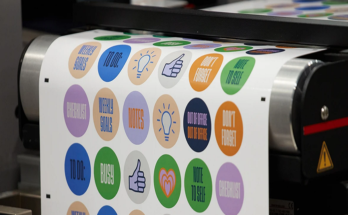The Philippines has visibly undergone a dramatic financial transformation in recent years, with virtual banking serving as the principal driver of this development. Not only has this technological revolution modified the manner Filipinos interact with monetary services, but it has also helped the U.S.A. end up more economically resilient and financially inclusive. In the Philippines, the financial sector is undergoing remarkable modifications as virtual transformation choices pick up velocity, with the capability to completely reshape banking in the country.
The Philippines’ Growing Adoption of Digital Banking
The Philippines’ archipelagic terrain has long presented difficulties for conventional banking. With more than 7,000 islands and a sizable population residing in isolated regions, physical bank offices have found it difficult to provide efficient services to all Filipinos. Digital banking was able to thrive as a result of this geographic obstacle, offering easily available financial services from anywhere.
Although digital banking Philippines started to gain popularity in the Philippines in 2015, the COVID-19 outbreak was an unanticipated catalyst. Filipinos were forced to find alternate means of making financial transactions when mobility limitations were imposed nationally. This gap was filled by digital banking services, which provide home-based access to anything from simple money transactions to sophisticated financial products.
This expansion has also been accelerated by the central bank’s progressive regulation strategy. Regulators have established frameworks that strike a compromise between consumer protection and innovation, allowing digital banking to flourish. The public’s trust in digital financial services has grown significantly as a result of this careful regulation.
Digital Transformation: A New Definition of Access to Finance
The Philippines’ digital transformation has significantly altered who is eligible to get financial services. The legitimate monetary system is now at hand to all and sundry with a smartphone and a web connection, thanks to virtual banking.
In a state where, till lately, almost 40% of citizens lacked the right of entry to banking, this modification is particularly noteworthy. Millions of Filipinos may additionally now gain loans, invest, keep cash, and set up credit statistics thanks to the internet, possibilities that have been formerly out of reach for many residents.
Access is the handiest thing about the change. Financial services at the moment are an extra individualized, handy, and moderately priced way to digital banking, which has completely modified their essence. Financial establishments may additionally now personalize their products to fulfill the demands of every customer thanks to superior records analytics, and automation has reduced running prices that formerly accelerated provider expenses.
Effect on Customer Expectations and Behavior
Long lines and restrained banking hours are fast turning into obsolete The Filipino customer of today demands seamless user experiences across all devices, rapid transaction processing, and round-the-clock service.
This change has produced a positive feedback cycle, whereby financial institutions increase their investments in digital capabilities as consumers adopt digital banking, which in turn draws more users to digital platforms. As a result, digital change in the financial industry is accelerating.
With the use of sophisticated encryption, biometric authentication, and consumer education, security concerns—once a major obstacle to the adoption of digital banking—are progressively being overcome. Filipinos’ readiness to perform intricate financial transactions online rises as they grow more used to digital security precautions.
Digital banking is assisting the Philippine economy in mobilizing dormant capital by reducing the obstacles to financial involvement. Formerly hidden under mattresses or in unofficial savings clubs, savings are now accessible through the official financial system and can be used to fund profitable ventures.
The Philippine economy’s foundational small and medium-sized businesses (SMEs) have profited most from this digital revolution. Access to finance, payment options, and financial management tools has improved for these companies. Improved company efficiency, more formalization of formerly unorganized businesses, and faster development potential are the outcomes.
Low minimum criteria for investment platforms have made a variety of financial products more accessible to all. Financial literacy is still evolving; however, it is getting better as digital systems encompass getting to know tools that make it less difficult for users to recognize and better manage their money.
Getting Past Obstacles on the Way to Complete Digital Transformation
Digital banking still confronts many boundaries in the Philippines, despite stunning advancements. The archipelago nevertheless has uneven internet coverage, with rural regions being mainly difficult to hit by way of inadequate infrastructure. The diploma of digital literacy varies substantially among demographic agencies, with older human beings and people with less training frequently finding it tough to adapt to new technology.
Problems with trust additionally still exist, mainly for folks who haven’t used virtual services a lot. The necessity for sturdy customer safety laws and ongoing schooling may be emphasized by way of sporadic instances of internet fraud and security breaches.
Even while regulatory systems are progressive, they ought to continue converting to meet new challenges. Regulators, economic institutions, tech companies, and purchaser advocates ought to constantly talk to be able to strike the correct balance between encouraging innovation and keeping gadget balance.
The Philippines’ Prospective Digital Banking Environment
Looking in advance, the Philippines’ digital banking industry is poised for even more innovative traits. Automated carrier shipping, tailored financial suggestions, and more superior fraud detection are all expected with the inclusion of synthetic intelligence. Blockchain technology has the ability to transform cross-border payments; that’s a vital function in a nation where millions of workers from overseas send cash domestically.
Financial services and other digital ecosystems will likely converge more inside the destiny. Financial control becomes more seamless and intuitive as banking offerings are integrated into everyday existence. This connection may be further stepped forward through open banking projects, which might allow customers to securely share their financial records throughout various platforms, a good way to get hold of customized offerings.
Conclusion:
Although the digital transformation philippines process in the Philippines’ financial industry is far from finished, it is headed in the right direction. Millions of Filipinos now use digital banking as their main means of financial engagement rather than just as an alternative channel. This transformation reflects a fundamental shift in how people view money and financial services, as well as a technological advancement. The Philippines’ developing digital banking enterprise can have an influence that is going beyond comfort to address extra serious financial issues, which include inequality and limited boom prospects. The basis for a greater, richer, and more equitable economic future for all Filipinos is being laid by virtual banking, which makes monetary offerings extra available, powerful, and touchy to purchaser wishes.
Other growing nations coping with comparable problems can learn plenty from the Philippines’ digital banking revolution. Even in a geographically difficult setting, it shows how customer adoption, supportive legislation, and technical innovation can work together to revolutionize a financial system. This shift has the potential to completely reshape not only banking but also the essence of economic engagement in Philippine society as it develops.




